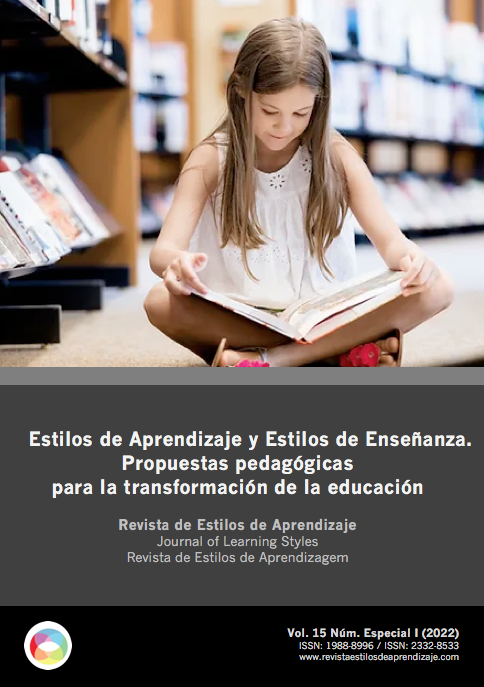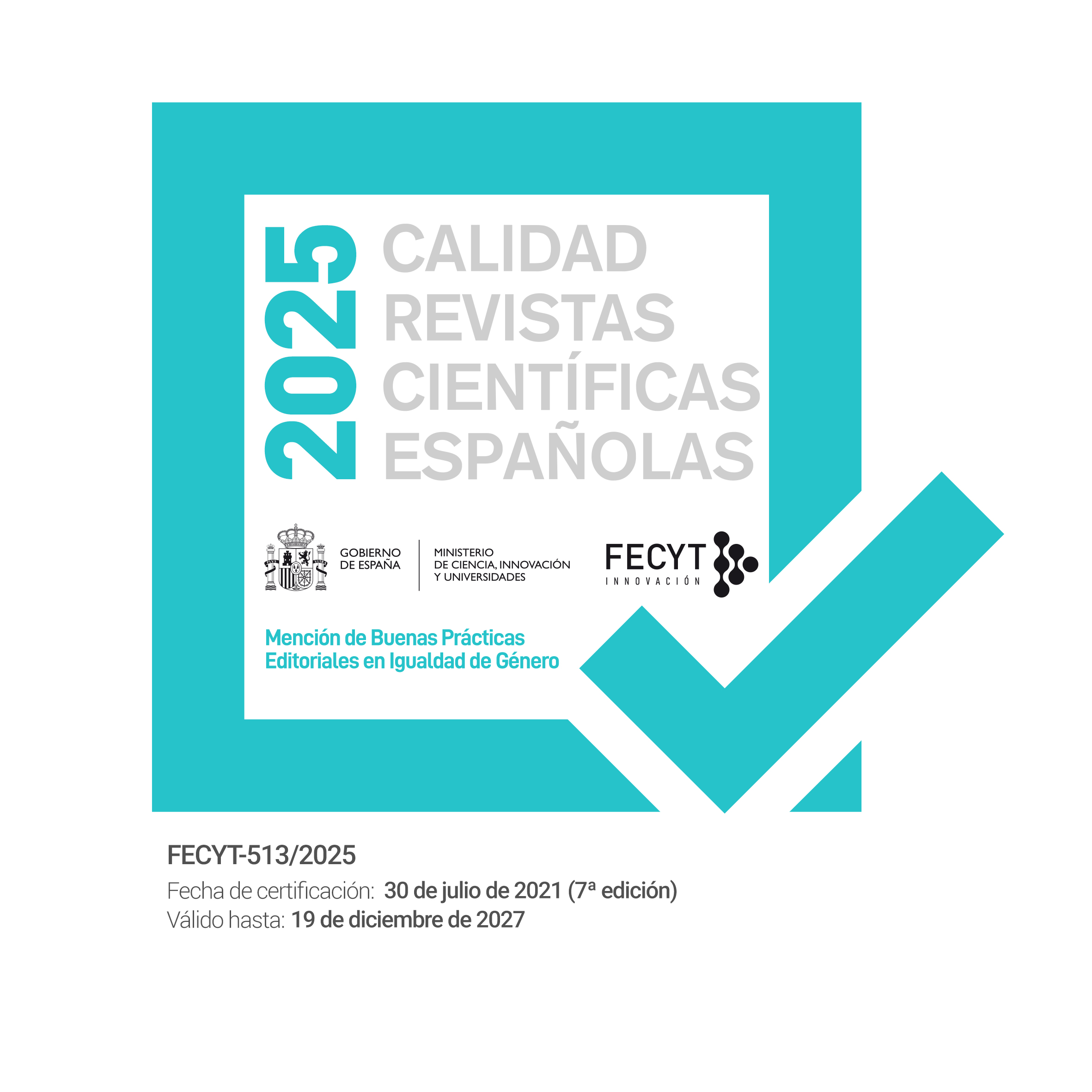The Didactic Units transmitting knowledge in the learning process of a university institution with an online methodology.
DOI:
https://doi.org/10.55777/rea.v15iEspecial.4537Keywords:
Teaching Model, Online teaching, Learning Model, University InstitutionAbstract
The material resources that are developed in university teaching with the online methodology are various, and allow an approach and communication between the teacher and the student. In this article, specific mention is made of Didactic Units, as one of the didactic material resources for transmitting the knowledge and contents of the subjects, in their conceptual, procedural and attitudinal form, forming part of the learning process of university students who study using the online methodology. The main objective is to show how the Didactic Units should be elaborated, in accordance with the Learning-Centred Model and with quality indicators that will serve as a basis for designing an evaluation instrument. A method of bibliographical research and projection of the reality of a university institution with this online methodology will be used. The learning that is carried out by the students is taking into account one of the characteristics of the extensive approach such as flexibility in the autonomy and freedom of the student, but at the same time, there are other teaching-learning models that will help them to integrate knowledge, for example, Ausubel's Organising Model.
Downloads
References
Aguirre, A.M. (1992). Propuesta y aplicación de un modelo para evaluar cursos monográficos de enseñanza a distancia. Universidad Complutense de Madrid. (Tesis Doctoral).
Aguirre A.M. (1993). Instrumentos para la evaluación de materiales. En Proyecto PATED 1Vademecum. Aplicaciones Tecnológicas a la Enseñanza a Distancia. Madrid: ANCED. pp.275-303
Aguirre, A.M. (2020). La función de acompañamiento del tutor en una institución con enseñanza online. En Liberal, S. y Sierra (Coord). Retos y desafíos de la innovación educativa en la era post COVID-19. Madrid: McGrwHill. pp.333-343
Alonso, C.M. (2008). Estilos de Aprendizaje. Presente y Futuro. Revista de Estilos de Aprendizaje, 1 (1),.4-15.
Aretio, L. G. (2011). Perspectivas teóricas de la educación a distancia y virtual. Revista Española de Pedagogía, 69(249), 255–271. https://bit.ly/3wXh3t9
Avolio de Cools, S. (1987). Evaluación del proceso de Enseñanza-aprendizaje. Buenos Aires.
Beltrán, J.A. y Pérez, L. F. (2012). CAIT: un modelo de aprendizaje para el S: XXI. Faisca. Journal of High Abilities, 17 (19), 93-125. Docplayer, 1-46. https://bit.ly/3wYJq9m
Bernardo, J. (cood), Javaloyes, J.J, Calderero, J.F, Muñoz, M.M, Jimeno, J. y Castellanos, A. Coord. (2011).Educación Personalizada: principios, técnicas y recursos. Madrid.
Bosco, A, y Rodríguez, D. (2008). Docencia virtual y aprendizaje autónomo: algunas contribuciones al Espacio Europeo de Educación Superior. RIED. 11, 1, pp.157-182. https://bit.ly/3a5J1tQ
Buschmann, F.; Meunier, R.; Rohnert, H.; Sommerlad, P.; Stal, M. (1996). Pattern-oriented software architecture. A system of patterns. Volume 1. John Wiley & Sons.
De la Orden, A. (2009): Evaluación y calidad: análisis de un modelo. Estudios sobre educación, 16, 17-36. https://bit.ly/3NO4dTX
Gairín, J. y Darder, P. (2001). Organización de Centros Educativos. Aspectos básicos. CISSPRAXIS.
García, L. (1986). Nuevos retos educativos y educación no presencial. Comunidad educativa, 147.
García-Peñalvo, F. J. (2019c). Modelo de docencia Virtual para una Universidad Presencial. In IX Jornadas Internacionales de Campus Virtuales. https://bit.ly/2m9p1nW. doi:10.5281/zenodo.3406263.
García-Peñalvo, F.J. (2020). Modelo de referencia para la enseñanza no presencial en universidades presenciales. Campus Virtuales, 9 (1), 41-56.
Guerrero, A. (2009). Los materiales didácticos en el aula. Temas para la Educación: revista para profesionales de la enseñanza, 5, p.2. https://bit.ly/3wVnYTR
Holmberg, B. (1985). Educación a Distancia. Situación y perspectivas. Buenos Aires. pp. 26-34
López, Z. (2018). El diseño de materiales didácticos sobre TIC para una enseñanza universitaria inclusiva y online. Revista Internacional de Comunicación y Desarrollo, 9, 30-41, https://bit.ly/3GtFzWd
Martín, M.A. (2004). Software de autor y estilos de aprendizaje. Didáctica, Vol 16, 105-116.
Rodríguez, J. y Cordero, N. (2011). Redacción de los objetivos para evidenciar el aprendizaje. Universidad de Puerto Rico: San Juan: Oficina de evaluación del Aprendizaje Estudiantil (OEAE) y Centro para la excelencia Académica (CEA). https://bit.ly/3MZn1iX
Segovia, M. (1993). Las nuevas tecnologías en la enseñanza a distancia. En Proyecto PATED 1-Aplicaciones Tecnológicas a la enseñanza a distancia. ANCED.
Tourón, J. y Martín, D. (2019). Aprender a enseñar en la Universidad. Una guía práctica para profesores. UNIR.
Zóssimo, L. (2018). El diseño de materiales didácticos sobre TIC para una enseñanza universitaria inclusiva y online. Revista Internacional de Comunicación y Desarrollo, 9, 30-41,
Zapata, M. (2005). Secuenciación de contenidos y objetos de aprendizaje. RED. Revista de Educación a Distancia, 2. https://bit.ly/3POtlLW

Downloads
Published
How to Cite
Issue
Section
License
By submitting the original, the author(s) declare that they are aware of and accept, in full, the privacy policy as well as the copyright of the Learning Styles Magazine.
The Learning Styles Magazine offers free and open access to its content, completely free of charge, in order to bring scientific research to its readers and society in general. All digital contents are free and open access and are published under a Creative Commons license:

Rights are granted under the Creative Commons Reconocimiento-NoComercial-SinObraDerivada 4.0 Internacional (CC-BY-NC-ND 4.0)
The Learning Styles Magazine is an open access journal. Publication of articles or reviews in the Journal does not entitle you to any remuneration. For authors as well as readers, the journal is free Creative Commons Reconocimiento-NoComercial-SinObraDerivada 4.0 Internacional (CC-BY-NC-ND 4.0).
With this licence, the reproduction and dissemination of the contents of the magazine for educational, social and knowledge transmission purposes is permitted, without any profit motive in mind, provided that the source and authorship are not modified. The licence granted to Learning Styles Magazine allows the copying and distribution of the magazine's contents, as long as the authorship of the work is recognised, correctly specifying the author and the publishing entity. The work may not be used for commercial purposes, nor may it be altered, transformed or generated from this work.
The publication of articles or reviews in the Journal does not give the right to any remuneration.
The Learning Styles Journal invites the author/authors to increase the visibility and scope of their articles published by re-disseminating them in:
- Web spaces and personal networks, as well as in scientific meetings and forums
- Open institutional archives in Universities, educational repositories and Research Centres.
- Academic and scientific networks (Researchgate, Academia.edu, Plubons, etc.)
All these spaces and publications must include all the bibliographic data of the publication.
























